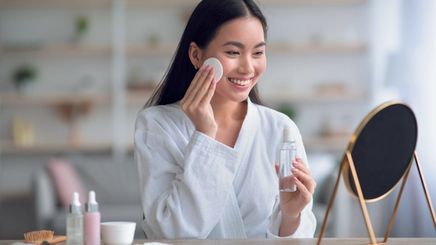
If acne is the bane of your existence, then here is some good news: with proper care and treatment, it will eventually heal and go away. Clogged pores are the primary cause of acne, but there can be several underlying triggers. These include excess sebum, bacteria, hormones, dead skin cells, and ingrown hairs. Blackheads and whiteheads are types of non-inflamed acne. Since you can have different kinds of acne at once, how do you tell the difference? Read this quick guide on whiteheads vs. blackheads and how to manage them.
Whiteheads vs. Blackheads: What’s the Difference?
Both blackheads and whiteheads are types of acne that don’t become red or swollen. They can still be a nuisance, though. What causes blackheads and whiteheads and how do you tell them apart?
Blackheads occur when with excess sebum and dead skin cells. They can also occur when hair follicles are irritated. The black “head” itself is a result of a chemical reaction. According to the American Academy of Dermatology, it is similar to what happens when you brandish a cut-up apple to air. When the buildup in the pore accumulates, the pore widens. Its contents get exposed to oxygen in the air, turning it black.
A whitehead forms the same way. However, unlike blackheads, these bumps are white, raised, and closed. They occur when the same substances (sebum, dead skin cells) build up and plug the opening of a pore. Since air cannot get inside, the contents of the pore don’t oxidize and turn black.
How to Manage Them
Typically, whiteheads can be more challenging to treat because the pores are closed. Using products that contain from cleansing to treatment can help. For blackheads, you could use , which speeds up the cell renewal process and prevents clogged pores. However, when it comes to managing acne, there is no “whiteheads vs. blackheads" debate. In general, products that are supposed to manage acne will help with both.
Cleansing is the most important part of acne clearing. You want a facial wash that removes dirt as well as excess oil. POND'S Bright Miracle Ultimate Acne Control Facial Foam is formulated with Thymo-BHA and vitamin B3+. This cleanses the skin, controls oil, prevents the accumulation of bacteria, and even brightens.
Top Pop or Not to Pop?
Here’s the golden rule of treating acne: Thou shalt not pick. The AAD states that picking at acne, whiteheads, in particular, can lead to more whiteheads and acne scars. This is because picking can spread bacteria to other parts of the face, apart from causing inflammation. The same goes for blackheads.
Before you channel Dr. Pimple Popper, think long and hard about the consequences of popping. It could push the buildup even deeper into the pore and worsen the inflammation and make the lesion even more noticeable. You could also get an infection and the subsequent acne scar. According to AAD, pimple popping is a task reserved for licensed dermatologists who know how to extract acne safely.
Managing different types of acne may involve the same steps (cleanse, tone, treat, don’t touch your face), but being able to differentiate whiteheads vs. blackheads can help with choosing products and help you understand your skin.